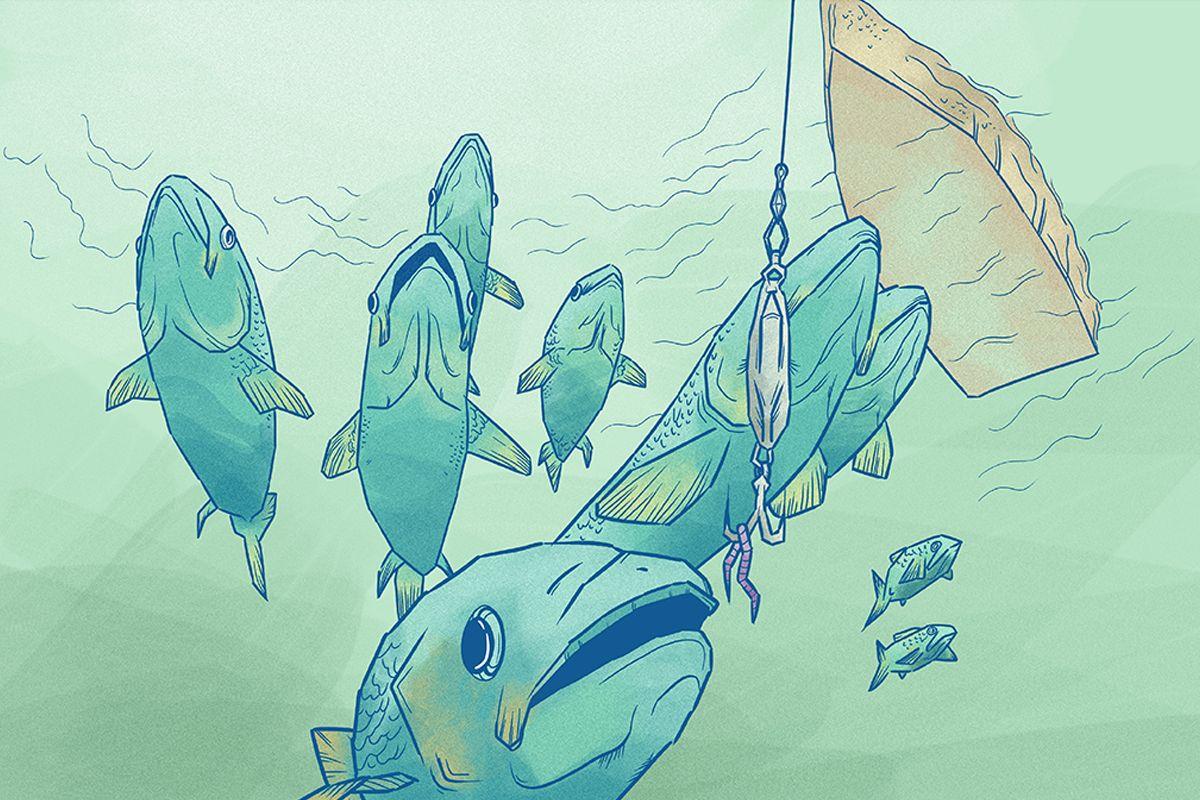On the coasts of San Felipe and Celestún, fishermen are working on a traceability project that is already paying off. Recently, they were visited by buyers from Walmart Mexico, as well as from chains in the United States and Europe interested in their products.
On August 18 and 19, representatives of retailers such as HEB Mexico, Iberostar, Norwegian Cruise Lines, TrueGrade Foods, Monarch Trading and BlueYou arrived in the peninsula, who held the first meetings with cooperatives to agree on purchases.

Buyers tried dishes based on Yucatecan seafood. Source: Mark Kaplan.
Román Antonio Can Perera, member of the San Felipe United Fishermen's Cooperative and the Fishing Industry Federation of the Eastern Yucatan, recognizes that this process represents a change and benefit for the region.
“We have entered the world of traceability and we see this well because only about twenty national and international buyers came and noticed that we are taking this seriously and that they will not be given a cat for a hare here,” he said.
Traceability is knowing all the way from species to reach a final consumer. Although it is a topic that is addressed at a global level, for Yucatec fishermen, its implementation implies a radical change in the way they sell their product and after several discussions in meetings, they agreed to implement a system of QR codes that, when scanned, reveal the full history of each fish or seafood.

The fishermen of Celestún and San Felipe are organized to comply with the traceability scheme. Source: EDF Mexico.
The information will include the exact point of capture, the person responsible for the fishing, the vessel used, the warehouse where it was stored and the transport to reach the supermarket or restaurant where it will be consumed.
“We also want our product to be tracked using this code and anyone who knows the travel route of our fish or seafood, to know how it arrived from Yucatán to Spain, for example,” added Can Perera.
Until now, species such as the Mayan octopus have already reached international destinations such as Spain and Morocco, but without a documented record of their entire journey. For anglers, formalizing this process is important to gain trust and get better prices.
Traceability goes hand in hand with sustainability
Claudia Febles Gutiérrez, coordinator of the Resilient Communities project at Environmental Defense Fund (EDF) Mexico, explained that in August meetings were organized in San Felipe and Celestún with representatives of companies interested in buying Yucatecan fish and seafood.
“There was a lot of interest and in the meantime, we and the fishermen see that their fisheries are sustainable because this goes hand in hand with traceability and thus they can open the door to new markets,” he emphasized.
Currently, the nearly 200 fishermen from the Kinkay cooperatives in Celestún and the Cooperativa Pescadores Unidos de San Felipe register their products manually, but the objective is to make the leap to a digital system that allows information to be transparent in real time.
Fishermen have been holding information workshops for two years, it was only in 2025 that they started formal training and even with the challenges of migrating to a digital world for some of them, they have committed themselves to achieving it.
 Yucatan seafood reaches European countries such as Spain. Source: Mark Kaplan.
Yucatan seafood reaches European countries such as Spain. Source: Mark Kaplan.
The bridge to buyers
One of the main allies in this process is Mark Kaplan, director of sustainability at Wholechain, a blockchain-based traceability platform that works with the United Nations (UN) to define international standards.
Kaplan was the one who brought buyers directly to the cooperatives of San Felipe and Celestún, with the purpose of giving small-scale producers access to fairer conditions in the market.
“If fish producers can demonstrate that they already have traceability with this, they already meet a requirement in the international market,” he stressed.
 The chefs used local produce to make special dishes. Source: Mark Kaplan.
The chefs used local produce to make special dishes. Source: Mark Kaplan.
As part of the bonding strategy, tasting dinners were organized by Chef Olivia Hernández and Jay Huang from Lucky Robot and Nomade in Austin; and Chef Vidal Elías de Mérida (Micaela Mar y Leña) to learn about the quality of Yucatec marine products.
For these events, the menus were designed with QR codes that allowed attendees to learn on their cell phones the story behind each dish.
“The buyers were given a menu with QR, scanned and learned through their mobile phones the history of the supply chain. With this insurance, fishermen achieve higher payments for their product, while there are not so many intermediaries who are often abusive to them,” Kaplan explained.
In December, buyers will return to Yucatán with formal acquisition proposals and hope to find a more consolidated traceability scheme.
Kaplan explained that the cooperatives involved in the project will become the first in the country to have the GDST (Global Dialogue on Seafood Traceability) certification, which would place their fishing communities at a competitive level on a global scale.
The GDST certification is granted by the foundation that bears the same name and is dedicated to sharing knowledge about traceability in the fishing chain.
Currently, the cooperatives of Celestún and San Felipe have already documented the capture process, however, they are now focusing their efforts on moving to digital mode.
“This will bring great benefits to the entity's blue economy and will thus be an example for the rest of Mexico and the world,” said Kaplan.
* This article was written by Itzel Chan, who covers coastal communities thanks to the support of the Report for the World program .




Comentarios (0)